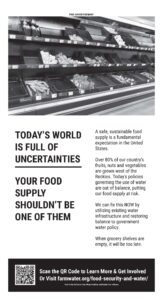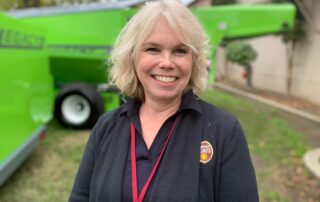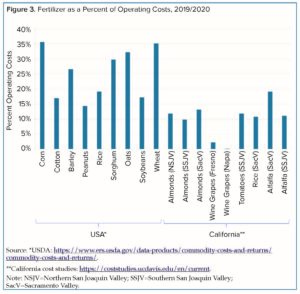Water Measurement and Reporting Courses Offered by UCCE May 26
By Pam Kan-Rice, UCANR
California water-rights holders are required by state law to measure and report the water they divert from surface streams. For people who wish to take the water measurements themselves, the University of California Cooperative Extension is offering a virtual training to receive certification on May 26.
At the workshop, participants can expect to
- clarify reporting requirements for ranches.
- understand what meters are appropriate for different situations.
- learn how to determine measurement equipment accuracy.
- develop an understanding of measurement weirs.
- learn how to calculate and report volume from flow data.
“We are limiting the number participants for the water measurement training to 30 people per session,” said Larry Forero, UC Cooperative Extension livestock and natural resources advisor. “If you need this training, please register soon.”
The scheduled trainings will be held Thursday, May 26, at two locations:
- Redding at Shasta College Farm. Registration is required and costs $25. To register visit https://ceshasta.ucanr.edu. For more information, contact Larry Forero (lcforero@ucanr.edu) or Sara Jaimes (sbjaimes@ucanr.edu) or by calling the UCCE office in Shasta County at (530) 224-4900. Training will begin at 8 a.m. and conclude at 11:30 am.
- Woodland at the UC Cooperative Extension at 70 Cottonwood Street. Registration costs $20. To register, visit https://cecapitolcorridor.ucanr.edu. For more information, contact Morgan Doran at mpdoran@ucanr.edu or the UCCE Yolo County office at (530) 666-8143. Training will begin at 2:30 p.m. and conclude at 5:30 pm.
Background:
Senate Bill 88 requires all water right holders who have previously diverted or intend to divert more than 10 acre-feet per year (riparian and pre-1914 claims), or who are authorized to divert more than 10 acre-feet per year under a permit, license or registration, to measure and report the water they divert. Detailed information on the regulatory requirements for measurement and reporting is available on the State Water Resources Control Board Reporting and Measurement Regulation webpage. The legislation requires that installation and certification of measurement methods for diversion (or storage) greater than or equal to 100-acre feet annually be approved by an engineer/contractor/professional.
California Cattlemen’s Association worked with Assemblyman Frank Bigelow on a bill that allows a self-certification option. Assembly Bill 589 became law on January 1, 2018. This bill, until Jan. 1, 2023, allows any diverter who has completed this instructional course on measurement devices and methods administered by the University of California Cooperative Extension, and passes a proficiency test, to be considered a qualified individual when installing and maintaining devices or implementing methods of measurement.
UC Agriculture and Natural Resources brings the power of UC to all 58 California counties. Through research and Cooperative Extension in agriculture, natural resources, nutrition, economic and youth development, our mission is to improve the lives of all Californians. Learn more at ucanr.edu and support our work at donate.ucanr.edu.

























